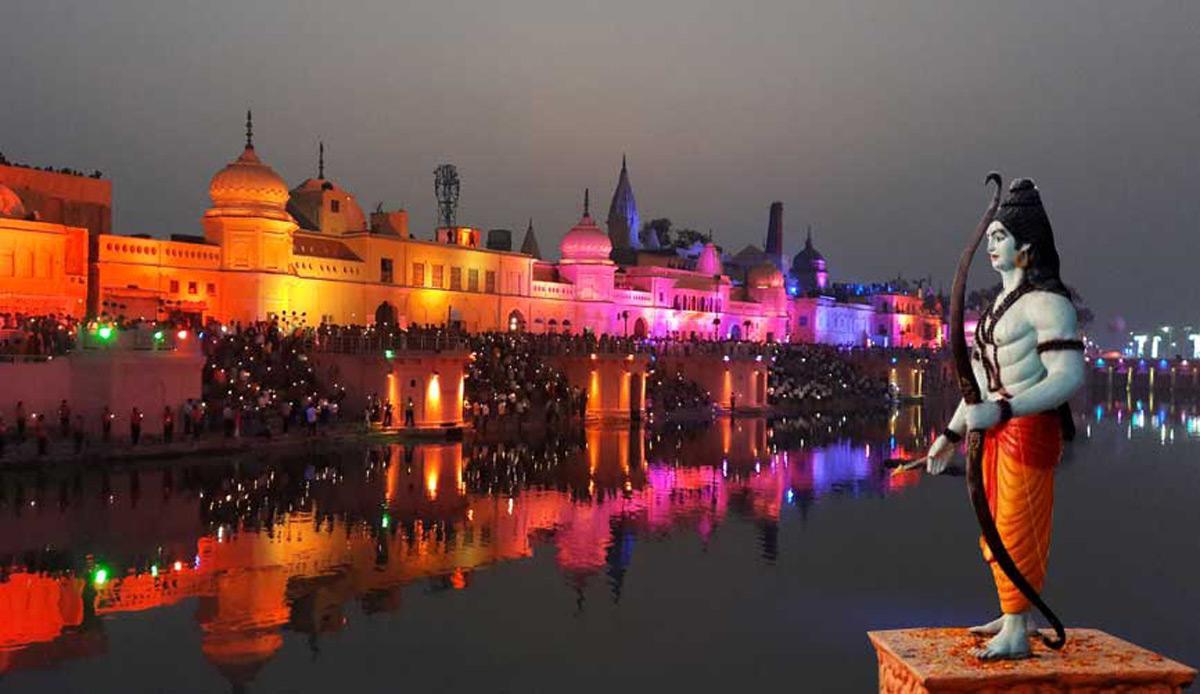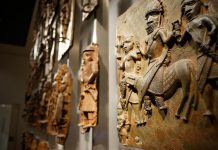Africa-Press – Mauritius. Now is just the right time to get back the Mandir at the birthplace of Sri Ram. The reason is that Ram is an epitome of Dharma, who fought and vanquished adharmic forces – and in our times, Adharma has become exceptionally strong and also needs to be fought and vanquished
Finally, it has happened: the construction of the Ram Mandir at Ayodhya, at the site considered to be the birthplace or janmabhoomi of Bhagavan Sri Ram.
This has been settled by a judgement of the Supreme Court of India delivered on November 9, 2019, which at the same time ordered the authorities to allocate an alternative site for the construction of a mosque in lieu of the ‘Babri’ masjid which had been built in 1528-29 during the reign of Babar, an invader from Uzbekistan, upon a pre-existing temple after destroying part of it.
Ram is back at Ayodhya.
Pic – mbug. com According to Dr Meenakshi Jain, well-known historian who has researched the issue extensively and written a book on it, there was definitive historical evidence to prove the existence of a Ram Mandir there.
An interesting point she made was that conquerors liked to showcase their grandeur to posterity, and for this purpose they had scribes who kept detailed records of the structures that they vandalized and what they subsequently built as well.
Such records exist in the case of the Ram Mandir too; but there are also other reports about the existence of the mandir from English and Jesuit travellers who described how pilgrims took a bath in the nearby Sarayu River before they would go to pray in the mandir, besides judicial records that also support the historical evidence.
Further, the Sikh Guru Nanak Dev has also given an account of his visit there in 1610, when he saw Hindus praying at the temple. On the other hand, there is also astrological corroboration from the scriptures. All such evidence was carefully scrutinized by the Supreme Court before it delivered its verdict.
But there was more: archaeological evidence gathered from preliminary surveys of the surroundings and actual excavations that were carried out, first in 1976/77, in which a key figure was KK Muhammad working as part of a team led by Prof BB Lal, then Director of the Archaeological Survey of India.
Further excavations in the 1990s under Dr Mani, also Director ASI, brought up further evidence. Archaeologist K. K Muhammad gives detailed accounts of the pillars and pillar bases that he found under the Babri masjid, all bearing carvings of the Hindu symbol purna kalash; further, his team found terracotta statues of Hindu deities, such as Ganesha, Vishnu, and Shiva.
He explains how he felt obliged to tell the truth about what he had found when leftist/Marxist historians (‘dystorians’) made public declarations that Prof Lal had not found any evidence of Hindu presence.
What peeved him particularly was that none of these so-called experts had any direct experience of the site since they had never been there, and were only depending upon material in the media, and besides they were not archaeologists, who use very precise methodologies to collect evidence.
So, the archaeological evidence amply confirmed what the expert historians had been advancing, and all this presented to the Supreme Court and the case argued by lawyer Vishnu Shankar Jain were more than enough to sway the decision in favour of the Ram Mandir.
This brief review provides the context in which this most important mega-event is taking place. It is being widely viewed as no less than a historical moment and a civilisational event that is long overdue in the Hindu calendar, one that has finally been resolved legally after 500 long years.
The verdict of the Supreme Court has been accepted by all the parties and communities and explains why the country and the diaspora are feeling exuberant as they impatiently look forward to Monday 22nd January for the consecration ceremony or Pran Pratistha of the idol of the Ram Lalla – Bhagavan Ram as a five-year old child.
In an article titled ‘Sri Ram’s help is needed against today’s Ravanas’ by Maria Wirth, a Hindu of German origin who has lived in India for over three decades, she writes that ‘maybe, now is just the right time for Bharat and the world to get back the Mandir at the birthplace of Sri Ram.
The reason is that Ram is an epitome of Dharma, who fought and vanquished adharmic forces – and in our times, Adharma has become exceptionally strong and also needs to be fought and vanquished. Humanity is presently not in good shape – without roots and direction, without meaning and values. It’s called “being woke”. ’
Dharma means right conduct in every sphere of life and at every level of society that allows people to live in peace and harmony with each other, and Adharma is the opposite where instead of peaceful coexistence there is strife and enmity, which lead to violence and destruction of societies and countries – pretty much what we are currently witnessing in the world.
Ravana, the demon-king in the epic Ramayana represents Adharma. He is the one who had abducted Prince Ram’s wife Sita and sequestrated her in Sri Lanka until he was destroyed by Sri Ram and Sita rescued.
For one, it is an enchanting love story that would resonate with all who know what love is. As Sadhguru of Isha Foundation said, ‘After all Ram was a king, and he had an easy solution at his disposal – marry anyone else of his choice, among most willing candidates.
But no, he walked thousands of km in wild jungles, crossed the seas to find his wife and bring her back. ’ To the puzzled female anchor who was interviewing him, he asked, ‘What kind of a man would YOU choose, the first type or the second one?!’
That is why Sri Ram is called Maryada Purushottam – ‘the man who is supreme in honour, who practised righteousness until he perfected it. ’ He exemplified all the ideal characteristics of a man in the roles he was called upon to play, as son, husband, brother, king, and is looked up to as the perfect human being to emulate. He was an avatar – the Divine in human form come down to Earth to show us how best to live our lives, so that we can be joyful and happy.
For More News And Analysis About Mauritius Follow Africa-Press







